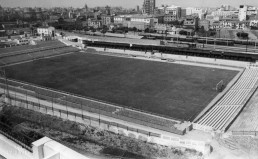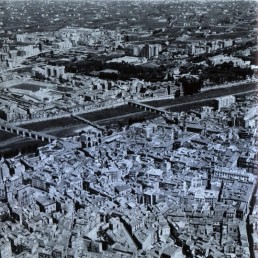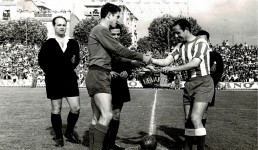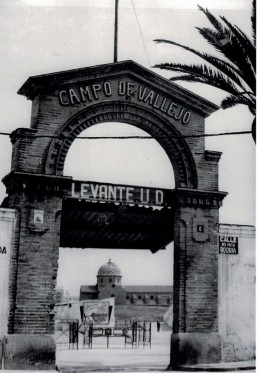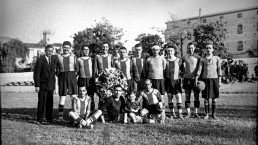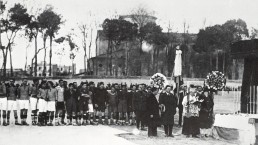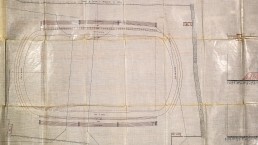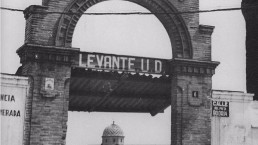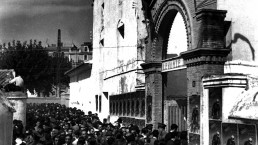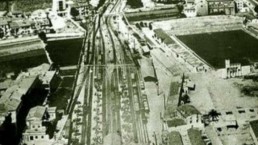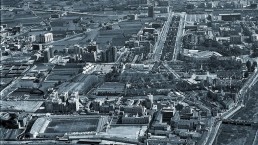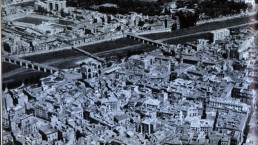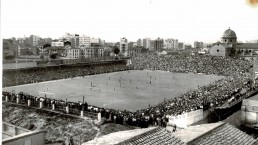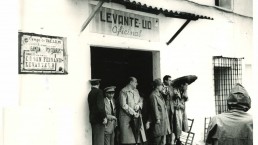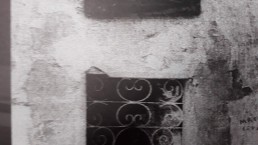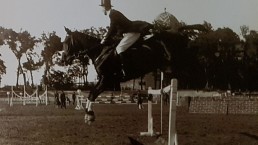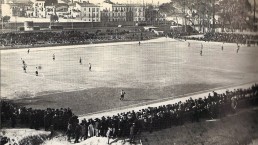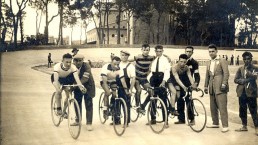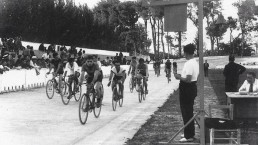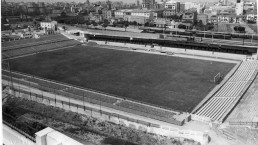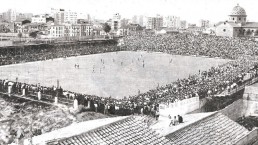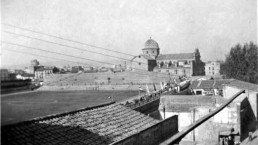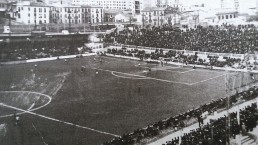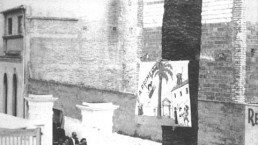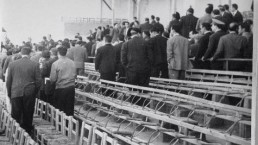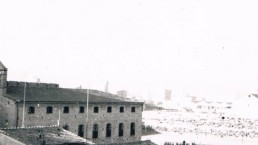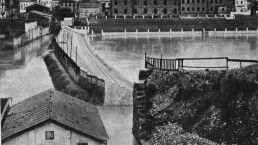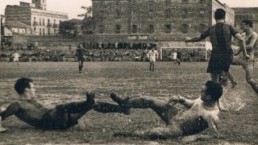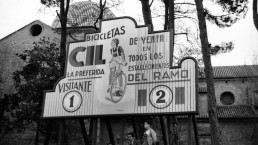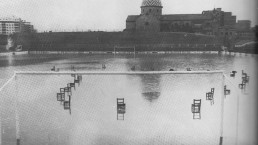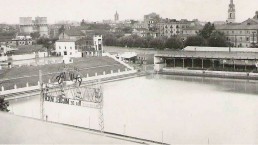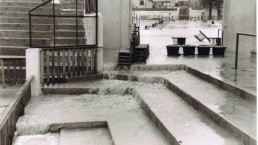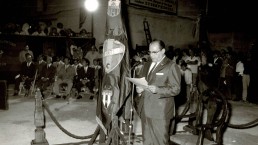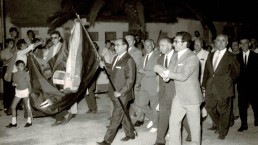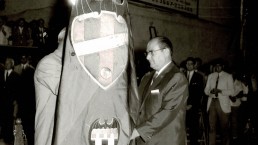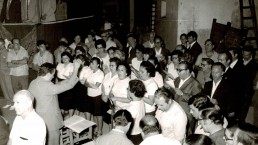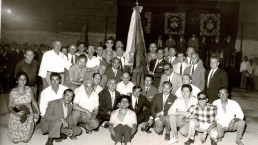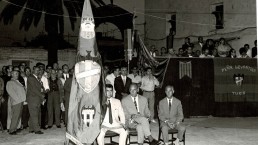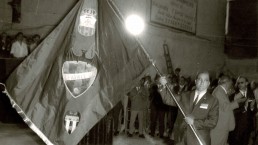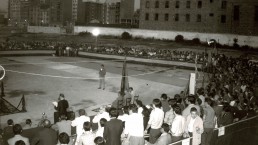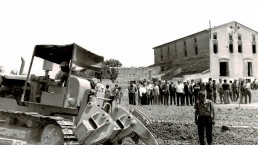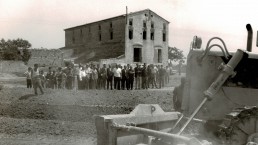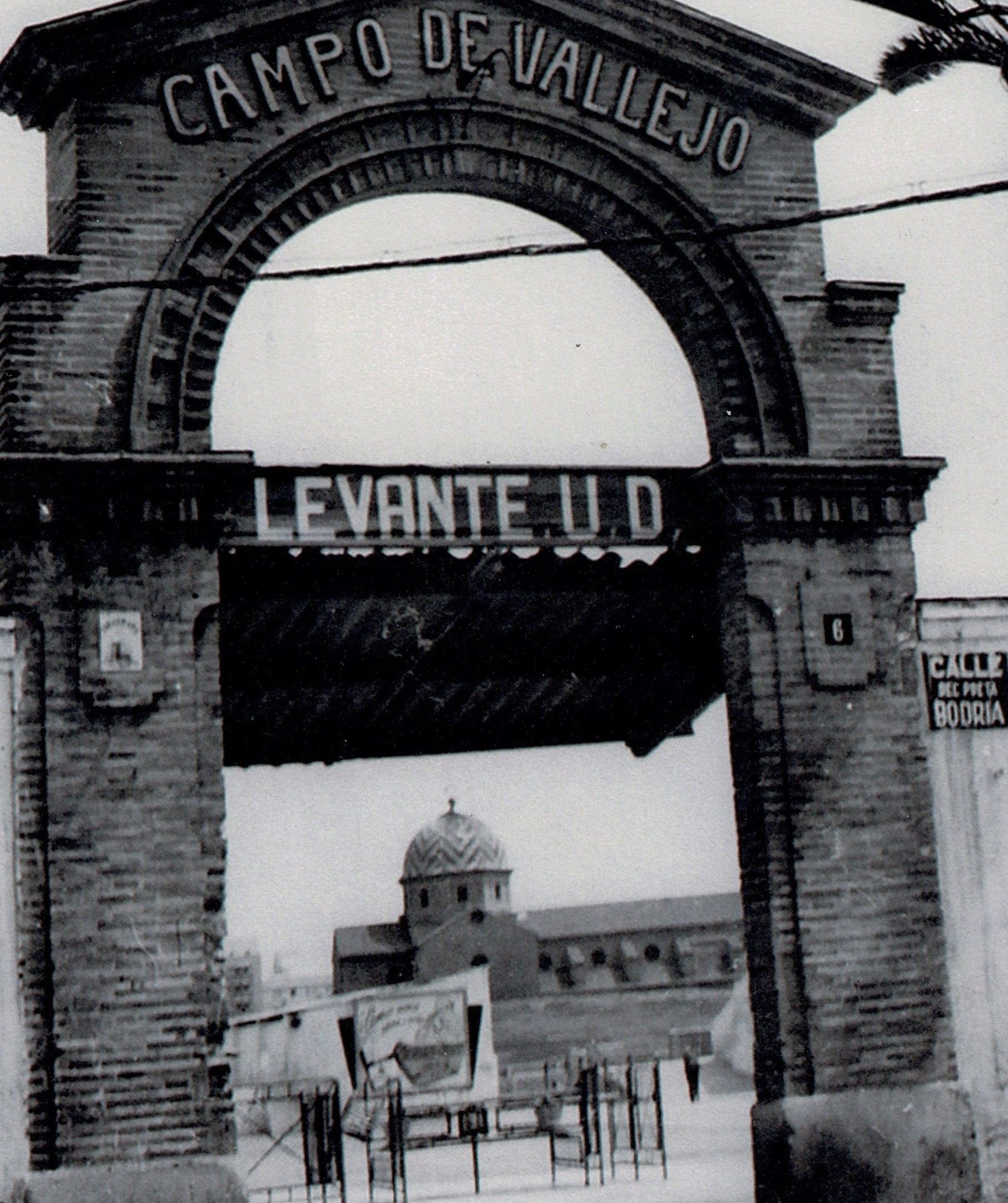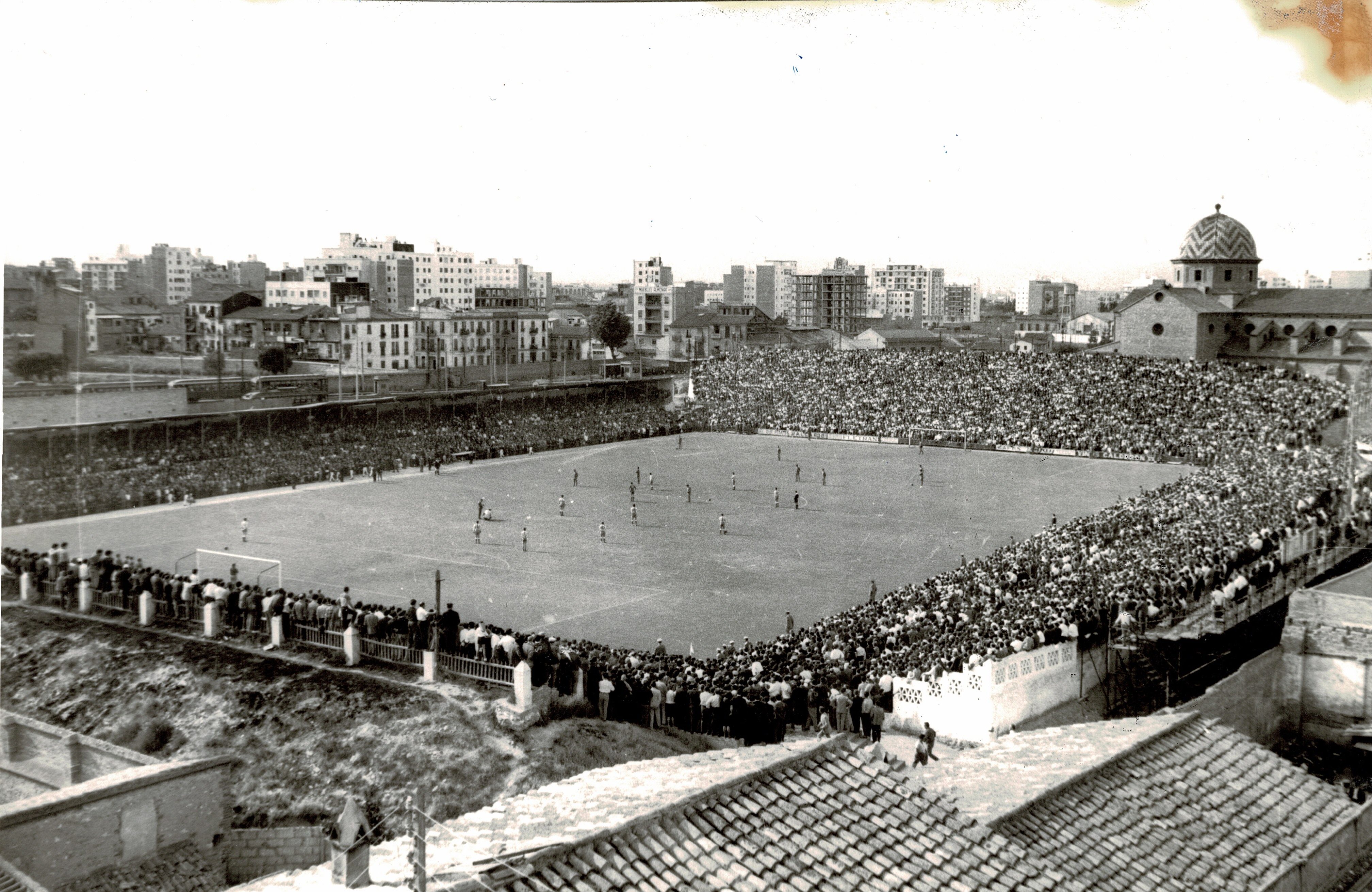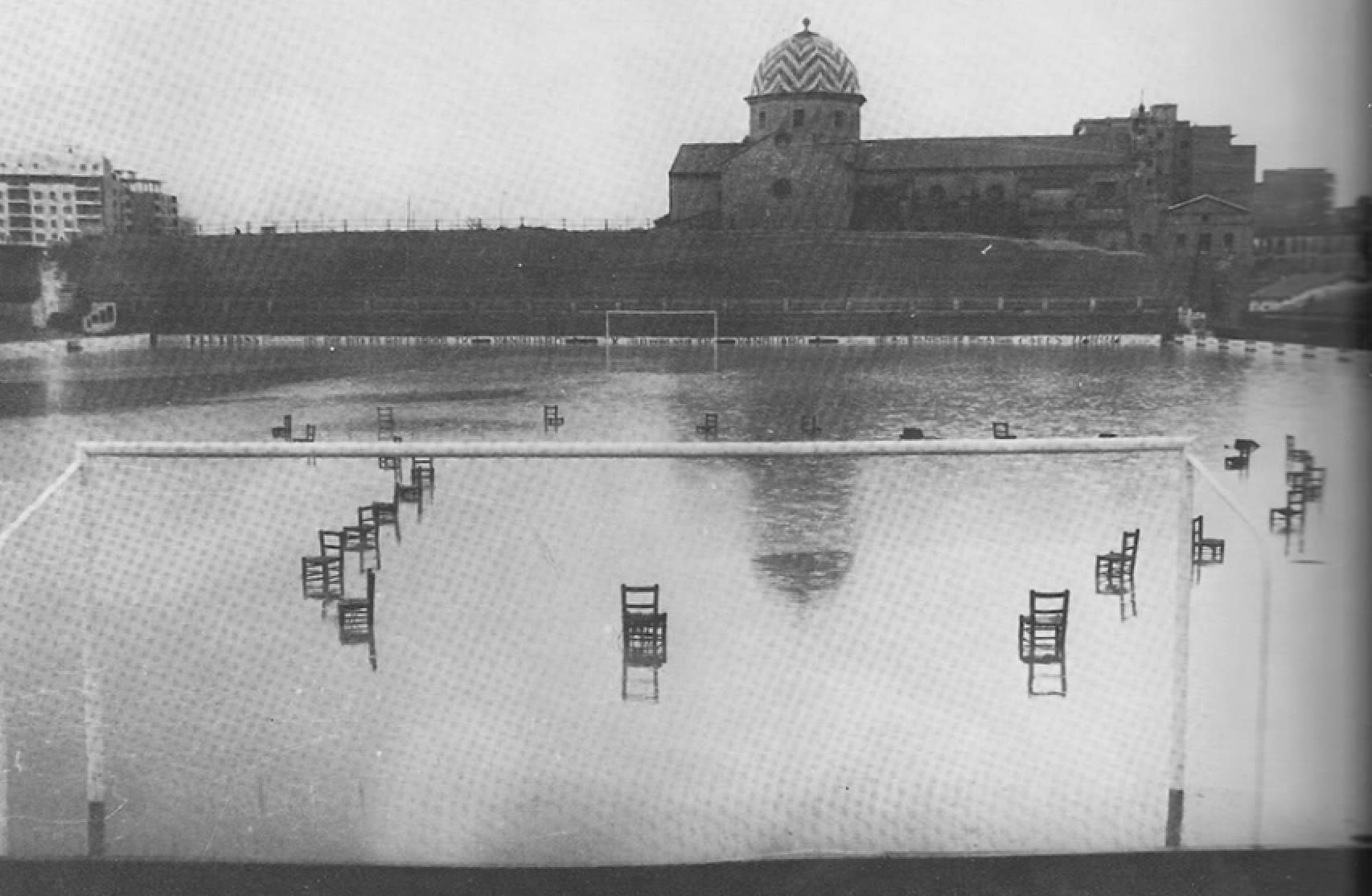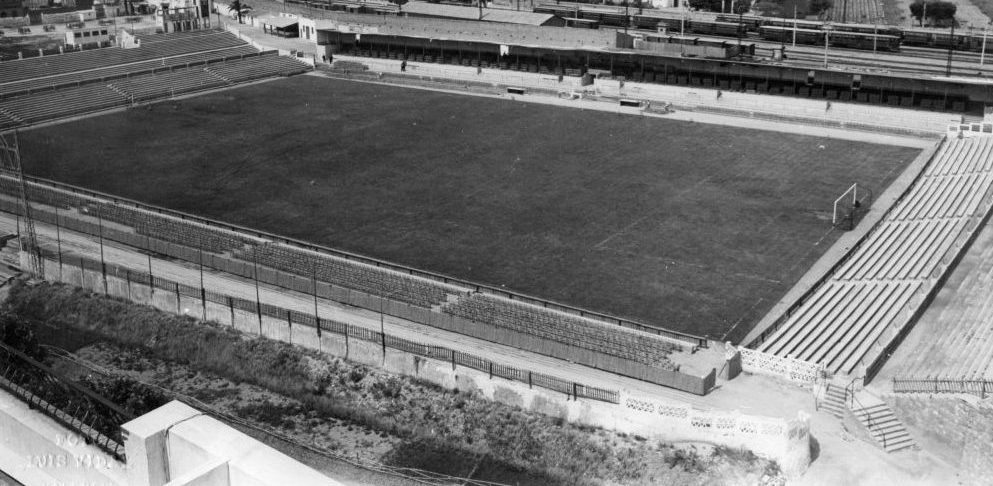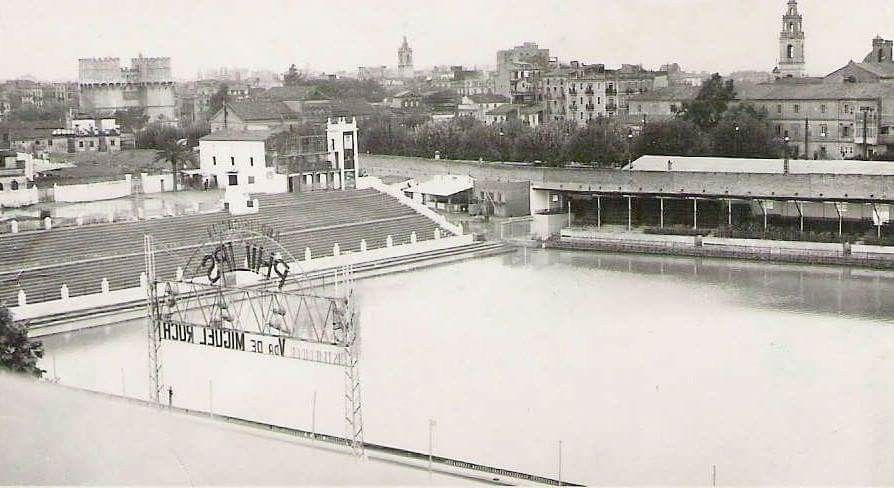It's History
An image of the Campo de Vallejo with the grandstand in the background.
The end of the Civil War in April 1939 changed the destinies of Levante F.C. and Gimnástico. The forced merger between the two clubs led to the birth of UDLG (Unión deportiva Levante-Gimnástico) which became Levante U.D. in June 1941. The nascent Levante took its place on the pitch of the Estadio de Vallejo, the scene of Gimnástico’s movements since the mid-1920s, to continue its historical development in the main national competitions. The Vallejo stadium, located in Alboraya street, produced an alteration in the habits of the fans who came from the Levantine taxon. The football days produced a confluence of opinions around this facility.
Vallejo seen from the sky over Valencia. Photograph courtesy of Benjamín García.
In each match, the supporters representing the old Levante converged at the Trenet Station from the Poblados Marítimos. For their part, the Gimnástico supporters, linked to Valencia’s historic centre and adjacent neighbourhoods, crossed the mythical Serranos Towers and crossed the Turia River to reach the facility. It was a pilgrimage between antagonistic conceptions. The representative supporters of the old marine club converged on the train station from the different enclaves that make up the Poblados Marítimos. On the other hand, the social mass attached to the gymnastics club, linked to Valencia’s historic centre and adjacent neighbourhoods, in a very high percentage, crossed the mythical Torres de Serranos and crossed the river Turia to get to the facility. This was the case until the end of the 1960s when Vallejo closed the gate for good. Nevertheless, Vallejo’s history in that stretch of the chronology is a fruitful one. The facility celebrated a promotion to the First Division, after an unforgettable promotion that brought together Levante and Deportivo de La Coruña, and enjoyed the beautiful scenery of the elite during the 1963-1964 and 1964-1965 seasons, capitalising on epic victories such as the one won by the Granotas against FC Barcelona in a match that meant César’s dismissal (5-1).
Vallejo touched the sky in June 1963 with promotion to the Primera División.
Titles in the lower divisions and promotions multiplied during these decades. On its turf, the UDLG dreamed of the top flight during the spring of 1940, although in the end it did not achieve the transition it had announced after leading its group at the end of the Regular League. At the end of the 1950s, another Primera División battle took place against the backdrop of a meeting between Levante and U.D. Las Palmas. That team, led by Wilkes, fought to the bitter end to gain a First Division status that had eluded them since the establishment of the league competition in the late 1920s. The passionate football and the genius of Antonio Calpe, follower of a lineage that had been advanced by Ernesto Calpe, an iron defender, the complicity with the entity of Agustín Dolz, the clairvoyant science and the magic of Ernesto Domínguez or El Pato, the race of Pedreño, Camarasa, Valls or Serafín, the infinite talent of Wilkes and the non-negotiable class of José María or Sampedro, all passed through their turf. Vallejo confirmed the goalscoring genius of Paredes and the voraciousness of Martínez Catalá and Wanderley.
The much-missed Portal de Vallejo remains in the imagination of the Levantines.
However, the most vibrant chapter of the coliseum in Alboraya Street was the episode concerning the seizure and definitive purchase of Vallejo by Levante in the early 1950s. The Vallejo Stadium belonged to the Martínez de Vallejo family. Levante was a tenant and scrupulously tried to comply with the agreed rent with varying degrees of success. This situation changed drastically in the early fifties. The owners of this sports ground decided to break this resolution by issuing an eviction order. The survival of the club was once again in question. It was in this context that Antonio Román took over the presidency of the company. The manager’s management proposed two fundamental lines of action that worked in close association; to stop, in the first instance, the devastating effects of the seizure and eviction and to take advantage of his political contacts to agree the definitive purchase of the facility for a price that Antonio Román himself put at five and a half million in post-war Spain. Part of the operation was paid for by issuing 15-year membership passes, while the rest of the capital came from an investment made by businessmen enlisted for the cause by the president.
